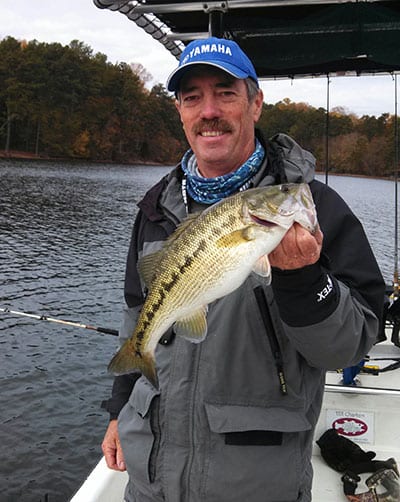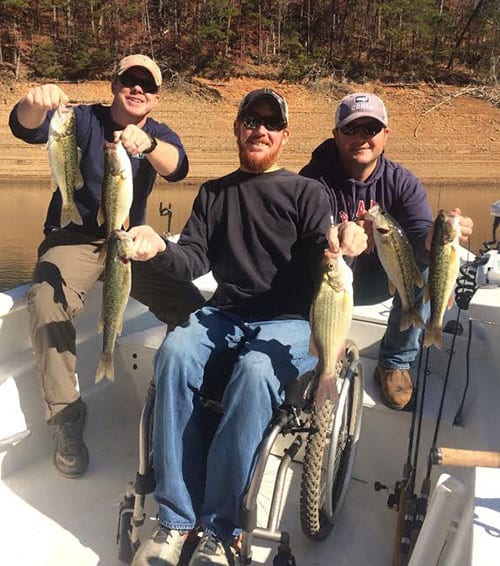November is associated with Thanksgiving, a time when differences are put aside and grace, and an attitude of forgiveness, rules. At least in our human world, that’s the case. In the piscatorial world, November may very well be a small fishes nightmare month. Gone are the hot days where even aggressive spotted bass lie on the bottom, barely able to rise and suck down a few shad to keep alive. “Listless” describes a lot of the summer fishing.
Once the colors are heading out and the nights chill down, every predator starts to stir with hunger pangs, knowing a long winter is ahead. Shad stay towards the surface at times and bunch up in big schools, and that leads to major carnage when met by their spotted or brownie friends. There seems to be the “safety in numbers” train of thought for both predator and prey. This also bodes well for our species when we come in contact with those mentioned above. There is nothing like rounding a bend in a lake to find the surface looking like a boiling pot, complete with pops and splashes, sizzling pods of frightened shad, or herring running for their lives. Sometimes singular, but often aggressive, pods of bass herding, and devouring whatever they can catch in feeding displays that make backlashes occur as if by magic.
Topwater plugs, like the spooks and chuggers, often work to elicit strikes. If you can’t get bit and fish are breaking all around, you probably haven’t matched the hatch, you may have baits too large so try dropping to a smaller size. Years ago, when white bass would reek havoc at Fontana, a white rooster tail couldn’t be beat. I have also seen big hybrids at Hartwell that wouldn’t eat anything but a small rooster tail or spoon, it just had to be the right size. There have been times when even small baits wouldn’t work and you have to think really small. My favorite thing is to tie two crappie jigs together with one about 12 inches down a leader and the other 18 inches down with a loop knot between. The most frustrating thing can be the ability to get close enough to cast to breaks. Depending on the species, it may take different strategies.

As a guide, you want to put as many fish in front of your clients as you can. When we get on a school of spots or smallies, it doesn’t seem to make much difference if fish are released or kept. The bait is usually threadfins so they aren’t going far. Stripers or hybrids though may be on herring and, to catch and release the first couple of fish, you may be shooting yourself in the foot. There have been times when a released fish will take off and the whole school follows. That being said, I generally keep at least the first couple in the live well if I don’t plan to keep any so there won’t be an incentive to follow a freed schoolmate. There is really no better time to be on the water, the crowds are gone, some color remains, fish are hungry, wildlife is moving and around that next bend the pot may be boiling. Have fun, be careful and thankful, and call if you want to catch a few. Later, Capt. James
Capt. James McManus is the Owner of 153 Charters. Give him a call for a great day of boat fishing!
